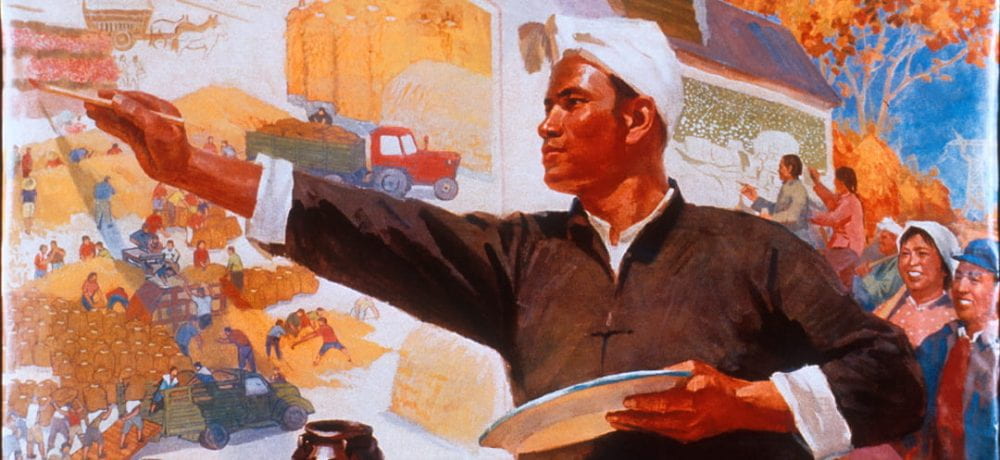The Chinese artist Feng Zikai was born in 1898 in the Zhe Jiang Province. He always loved painting and decided to enhance that knowledge by studying abroad in Japan in 1921. Many of his works after this were inspired by the new Western styles he learned while abroad. His love for all the arts lead him to teaching where he taught music and art in Chun Hui Middle School once back in China. (“The Award and Feng Zikai”). He developed a love and admiration for the spirits of children, and he first became known as an artist with a series of cartoons portraying lovable, mischievous children. (Hung 1994, 137)
Feng Zikai developed his cartoon skills based on the light-hearted topic of children, even modeling his cartoons after his own children. He also added a song or verse among his drawings to make them more poetic and meaningful. (Hung 1994, 137) His style combined traditional Chinese brush strokes with contemporary social settings, including humor and religious purport. (Hung 1994, 138) However, he did not classify himself as a traditionalist, but created more modern pieces that reflect his observation of the world around him. During and after the second Sino-Japanese War, Feng used his platform to reflect wartime ideologies. (Lin 2003, 5) Feng and his family were forced to flee and live as refugees during the Japanese attacks. By living through these experiences, “Feng now believed that art could and should play a major role in saving China.” (Lin 2003, 105) Therefore, Feng created many prints and cartoons related to his suffering, the suffering of the Chinese people, and the corruption that entailed.
In my exhibition, my goal is to focus on the artworks Feng Zikai created during and after the war period, and how much they differ from his prewar artwork. Not only does Feng’s work reflect this time period, but he was also around during the Chinese cultural revolution, and he created many cartoons in secret that reflect his take on that particular time period that might not have been accepted by the strict Communist government. This theme is important, because Feng lived through two of the most important historical phenomenon’s that took place in China during the twentieth century. I want to focus on how war affected his art and the way he viewed the world differently throughout his life. I want to emphasize how Feng was speaking for the people of China during that time through his artwork and how he used his art to resist and arouse nationalism. (Hung 1994, 140)
Feng Zikai, A mother’s head severed. From China Weekly Review 88.6 (8 April 1939): 177. Scroll, ink on paper. Image source: http://ark.cdlib.org/ark:/13030/ft829008m5/
As we can see from this image, Feng is portraying a mother being brutally killed while she is nursing her baby. He includes a poem to the right of the image about the tragic scene. This scene of a child alters greatly from the lighthearted cartoons of children he painted before the war. This image shows the tragic affect the war had on Feng, as well as how he thought it affected the innocent women and children of China.
Citations
Hung, Chang-tai. War and Popular Culture: Resistance in Modern China, 1937-1945. Berkeley: University of California Press, c1994 1994. http://ark.cdlib.org/ark:/13030/ft829008m5/
Lin, Su-Hsing “Feng Zikai’s Art and the Kaiming Book Company: art for the people in early twentieth century China.” Electronic Thesis or Dissertation. Ohio State University, 2003. https://etd.ohiolink.edu/
“The Award and Feng Zikai.” Feng Zikai. Accessed May 15, 2020. https://fengzikaibookaward.org/en/about-the-award/the-award-and-feng-zikai/.




